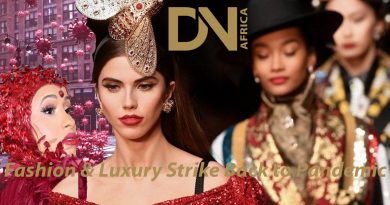Antwerp’s MoMu Takes Over City to Celebrate Reopening – WWD
ANTWERP, Belgium — “It’s the project of a lifetime — hopefully,” said Kaat Debo, chief curator and director of MoMu, Fashion Museum Antwerp, outlining the changes done to the Belgian institution since 2018 ahead of its public reopening on Sept. 4.
These changes include wider circulation spaces, particularly the entrance; the addition of an auditorium; the renovation of the Dries van Noten study library on the second floor, which now includes a study collection filled with examples of craftsmanship and confection details, and most importantly, a permanent exhibition space to showcase the MoMu’s 35,000-piece archive of Belgian fashion, the largest in the world.
Previously, the museum had only put on temporary exhibitions and would shutter during installation times. “That amounted to about three months a year,” Debo said. “Not ideal from a footfall point of view.”
In total, an additional 800 square meters of public spaces include a café operated by local concept store-cum-eatery Graanmarkt 13 and a shop featuring objects in collaboration with local design talent, like leather clutches by historic Belgian leather goods house Delvaux and jazzed up by the likes of knitwear label Meryll Rogge or buzzy dress makers Bernadette.
Behind the scenes, the MoMu entirely reorganized its archives, with 80 percent of its storage capacity in external locations. “We decided to [repatriate into the museum] the most fragile pieces, mainly plastics and man-made fibers,” she said.
Financed by the city of Antwerp, the VisitFlanders tourism board and the province of Antwerp, the renovation was done by local architecture practice B-Architecten, who took cues from the building’s original structure designed by architect Marie-José Van Hee.
To celebrate its reopening, the museum programmed three exhibitions, as part of its “Fashion 2.021 Antwerp – Fashion/Conscious” opening cycle, which runs until January 2022. Its overarching theme is the global transition, shifts within the world of fashion and the general reset within fashion that was accelerated by a period of global crisis, beginning in 2020.
Looks from Belgian Sixties avant-garde designer Ann Salens from the MoMu’s permanent collection
Stany Dederen/Courtesy of MoMu – Fashion Museum Antwerp
On the ground floor, the permanent collection took the shape of an annually rotating selection grouped around various themes relevant to Belgian creation and design, such as deconstruction, chintz, surrealism or the work of little-known avant-garde 1960s designer Ann Salens. Among the highlights of this was a 15-minute documentary on the origins of the moniker “Belgian fashion,” starting with the rise of the “Antwerp Six.”
(The Antwerp Six included Dries Van Noten, Ann Demeulemeester, Dirk Van Saene, Marina Yee, Walter Van Beirendonck and Dirk Bikkembergs — all alumni of the city’s Royal Academy of Fine Arts, and were considered fashion’s next radical wave.)
“The past three decades, we saw an amazing globalization which means that today, ‘Belgian fashion’ is more a sensibility or a quality label than [an indicator of] where a designer is born, raised or educated,” said Debo, introducing Elisa De Wyngaert who co-curated the ‘E/Motion. Fashion in Transition’ exhibition on the first floor.
Using photographs, films and live performances alongside fashion items, the exhibition explores questions such as the female body, the Sept. 11 terror attacks and various crises from AIDS and COVID-19 to the climate emergency and fashion’s impact.
The ‘E/Motion’ exhibition is part of the museum’s reopening program.
Stany Dederen/Courtesy of MoMu – Fashion Museum Antwerp
A third exhibition, titled “P.Lace.S” is scheduled to run from Sept. 25 to Jan. 2, 2022. Taking the format of a circuit through the town’s lace-related locations, it will highlight the history of lace in Antwerp with a particular focus on the place of women, who were not just producers but held positions of power, running from the late Renaissance to the modern age and the experimentation of designers Iris van Herpen, Azzedine Alaïa, Prada, Chanel and Louis Vuitton.
At the invitation of the city’s governing body, the museum also expanded beyond its walls in a city-wide event, with events and installations throughout the city, from photography featuring the works of Walter Van Beirendonck, Raf Simons, Glenn Martens, Marine Serre, Botter and Supriya Lele; to the “Fashion Balls,” giant spheres that visitors can climb into, making it look like they are wearing the spheres.
MoMu’s ‘Fashion Balls’ made their appearance around the city as part of its reopening celebrations.
Jasper Leonard/Courtesy of MoMu – Fashion Museum Antwerp
A statue of the Madonna, housed in the city’s Cathedral of Our Lady, received a new gown, designed by Belgian couture house Natan’s creative director Edouard Vermeulen — a previous outfit had been designed by Ann Demeulemeester.




